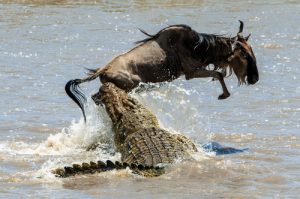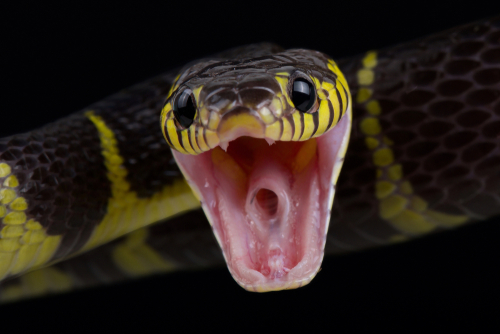
Snake Bite Statistics
According to the World Health Organisation, more than 5 million humans are bitten by snakes every year. As a result, the best estimate is that somewhere between 80,000 and 140,000 people die annually from such attacks. Additionally, up to a further 300,000 victims are thought to suffer amputations or other permanent disabilities each year. The majority of snake bite deaths occur in South Asia, where appropriate education and treatment are most lacking. And, of these deaths, around 80% occur in India.
However, not all the world’s snakes are deadly or even pose a threat to humankind. While there are almost 4,000 species of snake worldwide, only some 700 are venomous. And of those, less than 250 snake species are capable of killing a human with a single bite. So, just which snake species are the biggest killers?
A snake’s lethality can be reasonably measured in two ways i.e. those with the most potent venom or those that kill most people. Due to factors like the snake’s aggressiveness, abundance, preferred habitat, and locality, these are not necessarily the same species. While statistics related to snake attacks are often contentious due to poor data collection, most experts agree on which species are the most lethal. Here’s a brief narrative on five snakes that are thought to be among the biggest killers of people:
Russel’s Viper
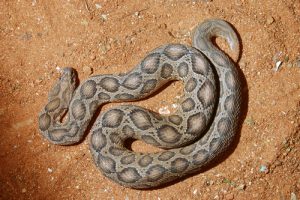
Photo credit: Lakeview Images/Shutterstock.com
The range of Russell’s viper stretches throughout the entire Indian subcontinent. It’s considered one of the world’s most dangerous snakes because it inflicts a medically significant bite with a high fatality rate. The highly aggressive snake is different from many other species in the fact it tends to bite with little provocation. It is thought to be responsible for well over 40% of all snake bites in India. Russell’s vipers are estimated to kill between 15,000 and 25,000 people in India each year.
Saw-scaled Viper
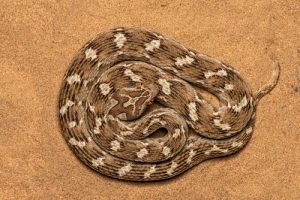
Photo credit: Sheril Kannoth/Shutterstock.com
The saw-scaled viper is found throughout much of the Middle East, Central Asia, and South Asia. The species is often cited as the world’s deadliest snake. That’s because many experts believe that it is responsible for more human deaths globally than any other snake. It is a particularly aggressive snake that strikes early and often. The fact that the species has a penchant for living in highly populated areas, means attacks are frequent. It is thought that saw-scaled viper is responsible for more than 5,000 deaths annually, in India alone.
Common Krait
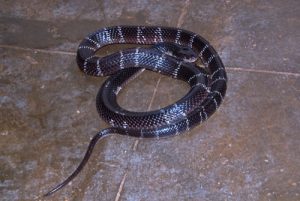
Photo credit: Sandip c pandya/Shutterstock.com
The common krait, also known as the Bengal krait, is a highly venomous species of snake that is native to the Indian subcontinent. It habitats a variety of habitats that includes fields, low scrub jungles, and settled areas. The snake’s venom consists of powerful neurotoxins that induce irreversible muscle paralysis. The mortality rate of the snake’s untreated victims is around 75%. Thus, while its known strike rate is about half that of the Russell’s viper it is thought to kill 10,000 people per year in India.
Indian Cobra
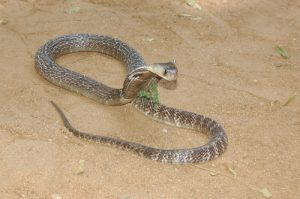
Photo credit: Lakeview Images/Shutterstock.com
The Indian cobra is a deadly snake that is naive to the Indian subcontinent. It is extant in a wide variety of habitats throughout its range, where it is thought to be responsible for some 12% of all snake attacks. The species has a moderately powerful venom that, according to one study, kills around 25% of all untreated victims. Its bite leads to muscle paralysis of its prey, with severe bites eventually leading to respiratory failure or cardiac arrest. The Indian cobra is thought to kill around 15,000 people across its range, every year.
Black Mamba
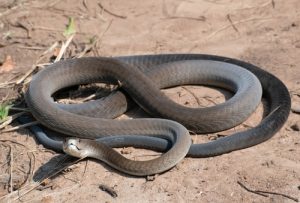
Photo credit: Craig Cordier/Shutterstock.com
The range of the black mamba is throughout almost the entire sub-Saharan region of Africa. The species is considered Africa’s deadliest snake for a very good reason. An untreated bite from a black mamba has a 100% chance of ending in death. Due to particularly poor reporting, experts believe annual snake bite deaths in Africa might be as low as 20,000 or as high as 50,000. Thus, scientists aren’t sure how many people are killed every year by black mambas. However, it is estimated that the species is responsible for the most snake-related deaths throughout Africa.
Header image credit: reptiles4all/Shutterstock.com


